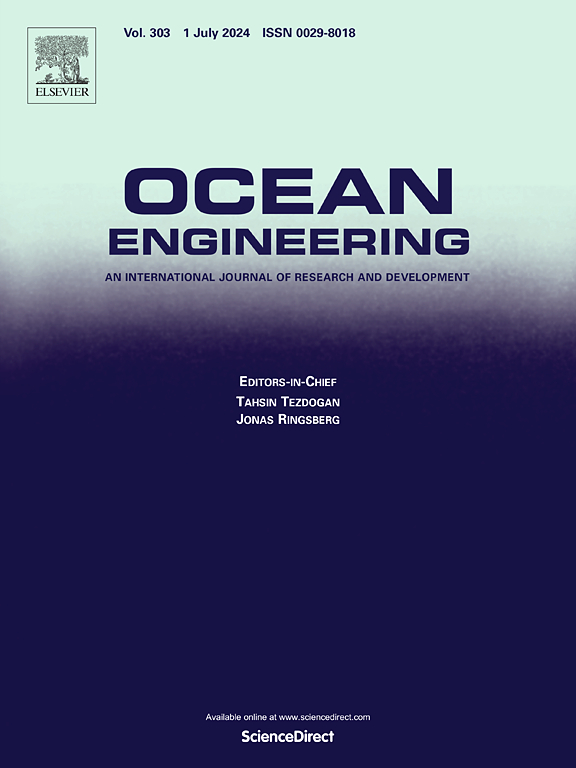Hydrodynamic performance and narrow gap resonance of WEC-floating breakwater hybrid system: An experimental study
IF 4.6
2区 工程技术
Q1 ENGINEERING, CIVIL
引用次数: 0
Abstract
Wave energy is a significant ocean renewable resource with vast reserves and wide distribution. Integrating a wave energy converter (WEC) and a floating breakwater offers an effective answer to promote its commercialization. In this study, model tests are conducted to investigate the wave energy absorption and attenuation performance of the WEC-breakwater hybrid system with various WEC geometries, focusing on narrow-gap resonance. Optimal configurations for gap width and WEC dimensions were identified. The results reveal a significant improvement in both energy absorption and wave attenuation performance of the WEC-breakwater hybrid system compared to single WEC or single breakwater. Particularly, the hybrid system with an asymmetric triangle-baffle WEC exhibits broader efficiency range frequency and superior wave energy conversion efficiency, while also enhancing the wave reduction capabilities of the floating breakwater for short waves. Effects of the narrow gap resonance on the hybrid systems with symmetric and asymmetric WECs differ. The system with a narrower gap and a slender WEC exhibits better wave energy absorption performance, but the influence on wave attenuation is found to be limited. These findings could provide valuable recommendations for designing WEC-breakwater hybrid systems, helping to avoid unnecessary costs resulting from improper design.

求助全文
约1分钟内获得全文
求助全文
来源期刊

Ocean Engineering
工程技术-工程:大洋
CiteScore
7.30
自引率
34.00%
发文量
2379
审稿时长
8.1 months
期刊介绍:
Ocean Engineering provides a medium for the publication of original research and development work in the field of ocean engineering. Ocean Engineering seeks papers in the following topics.
 求助内容:
求助内容: 应助结果提醒方式:
应助结果提醒方式:


